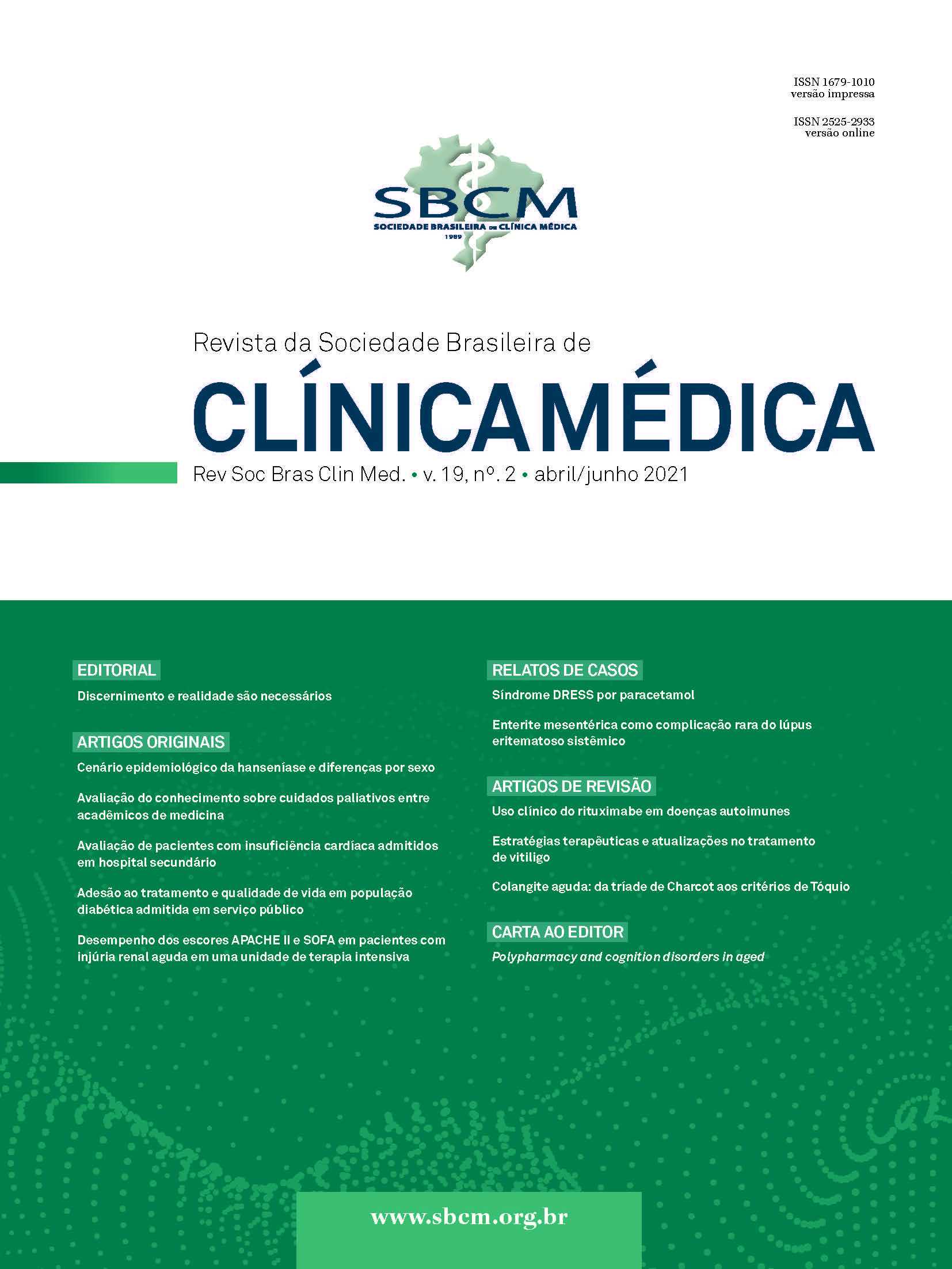Polifarmácia e transtornos cognitivos em idosos
Main Article Content
Resumo
Dear Editor, We read with especial interest the recent article by Maragno et al. about the adverse effects of the concomitant use of multiple drugs by elderly people.1 The study included 141 patients from the age groups between 60 to 69 years (36.9%) and 70 to 79 years (34.0%), and 74.5% of the individuals were females. Scores of Montreal Cognitive Assessment (MoCA) and Brazilian OARS Multidimensional Functional Assessment Questionnaire (BOMFAQ) quantified their functional and cognitive capacity. The majority of patients (124) had arterial hypertension (94), dyslipidemia (51), and diabetes mellitus (40). The average number of drugs per patient was 4.4; and the more often used drugs were omeprazole, simvastatin, acetylsalicylic acid, hydrochlorothiazide, enalapril, losartan, and metformin. Polypharmacy (more than four drugs) occurred in 61 patients, 80 used one to four drugs, and 47 used five to nine drugs. There were 15 patients with inappropriate prescription of the following medications: zolpidem, amitriptyline, diazepam, and clonazepam. Scores of MoCA and BOMFAQ quantified their functional and cognitive capacity.1
Article Details
Declaração de Direito Autoral
Eu (nome do autor responsável) _______________________________________________ declaro que o presente artigo intitulado ___________________________________é original, não tendo sido submetido à publicação em qualquer outro periódico nacional ou internacional, quer seja em parte ou em sua totalidade. Declaro, ainda, que uma vez publicado na revista Revista da Sociedade Brasileira de Clinica Médica, editada pela Sociedade Brasileira de Clínica Médica, o mesmo jamais será submetido por um dos demais co-autores a qualquer outro meio de divulgação científica impressa ou eletrônica.
Por meio deste instrumento, em meu nome e dos demais co-autores, cedo os direitos autorais do referido artigo à Revista da Sociedade Brasileira de Clinica Médica, e declaro estar ciente de que a não observância deste compromisso submeterá o infrator a sanções e penas previstas na Lei de Proteção de Direitos Autorias (n 9610 19 de fevereiro de 1998) que altera, atualiza e consolida a legislação sobre direitos autorais e dá outras providências. Disponível em: http://www.planalto.gov.br/ccivil_03/leis/l9610.htm
|
_________________________ |
___________________ |
|
Local, data |
Assinatura |
SOCIEDADE BRASILEIRA DE CLÍNICA MÉDICA
CNPJ/MF 062.279.617/0001-45
Rua Botucatu, nº 572, cj. 112, São Paulo, SP
Download da Declaração de Direito Autoral.
